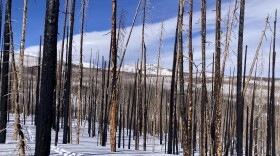-
The Honoring Our Fallen Heroes Act was introduced by Democratic Minnesota Sen. Amy Klobuchar in January, but has received substantial bipartisan support.
-
As wildfires get more intense, there are questions about how effective prescribed fire and other fuel treatments can be. New research suggests that they can still have real impacts.
-
Predicted strong winds on Wednesday have Xcel Energy considering Public Safety Power Shutoffs to avoid the risks of starting wildfires.
-
Colorado, like the rest of the country, is experiencing more, and worse, climate disasters, wreaking havoc on people’s homes and their homeowner’s insurance rates.
-
Brian Fennessy has nearly 50 years of fire experience, which began in the late 1970s on elite federal hotshot crews and other wildfire teams.
-
President Donald Trump’s administration has continued to maintain that it has adequate resources and staffing to manage wildfire preparedness and response on federal lands.
-
A group of mostly Western U.S. Senators is demanding answers on why the U.S. Forest Service has fallen behind on efforts to reduce hazardous wildfire fuels. The 12 senators – all Democrats – are from Nevada, Colorado, New Mexico and other wildfire-impacted states.
-
As blazes expand to higher elevations, the impacts cascade downstream.
-
The Healthy Lungs for Heroes Act was introduced by Democratic California Senator Adam Schiff and Republican Utah Senator John Curtis. If passed, the U.S. Department of Agriculture and other federal officials would have one year to develop a plan to make “commercially available appropriate respiratory personal protective equipment for wildland firefighters and supporting staff in settings in which smoke exposure surpasses covered permissible exposure limits.”
-
Data analyzed by the advocacy group Grassroots Wildland Firefighters shows that prescribed fires and other hazardous fuel reduction efforts have fallen by nearly 40% across the West this year.

Play Live Radio
Next Up:
0:00
0:00
Available On Air Stations









